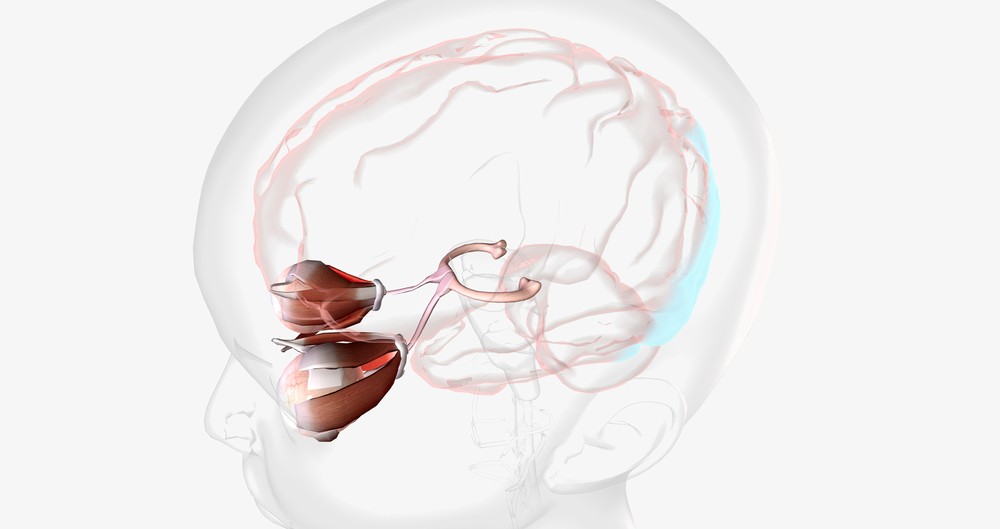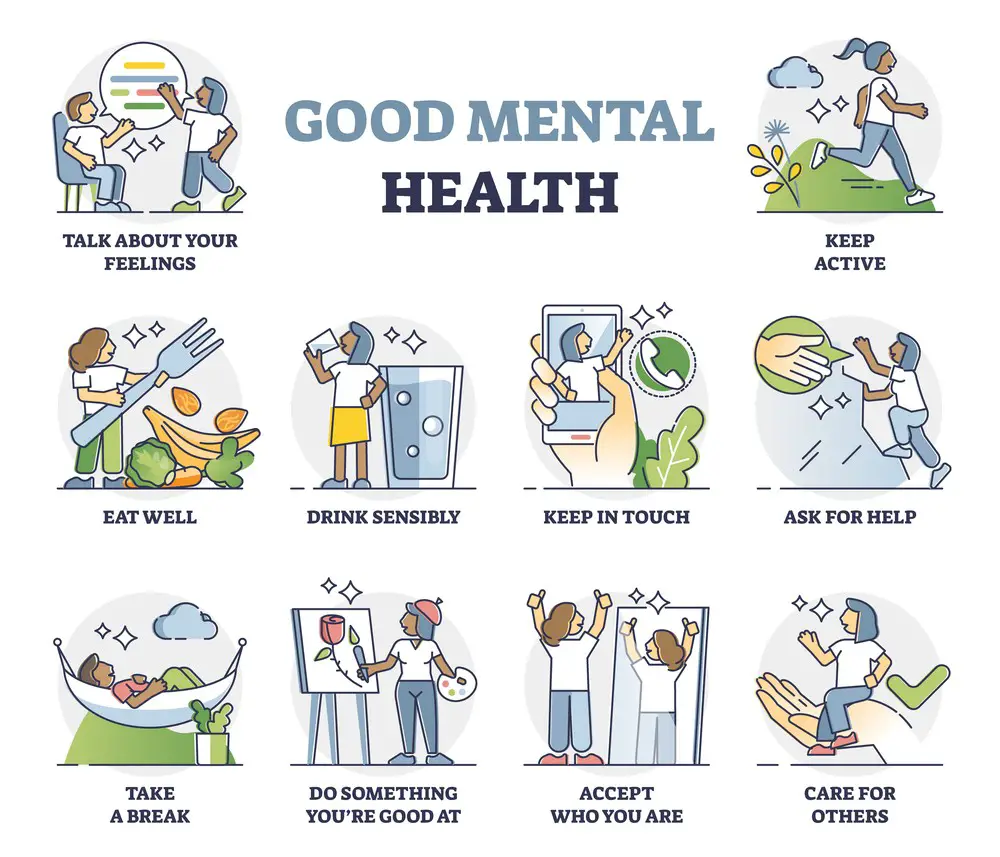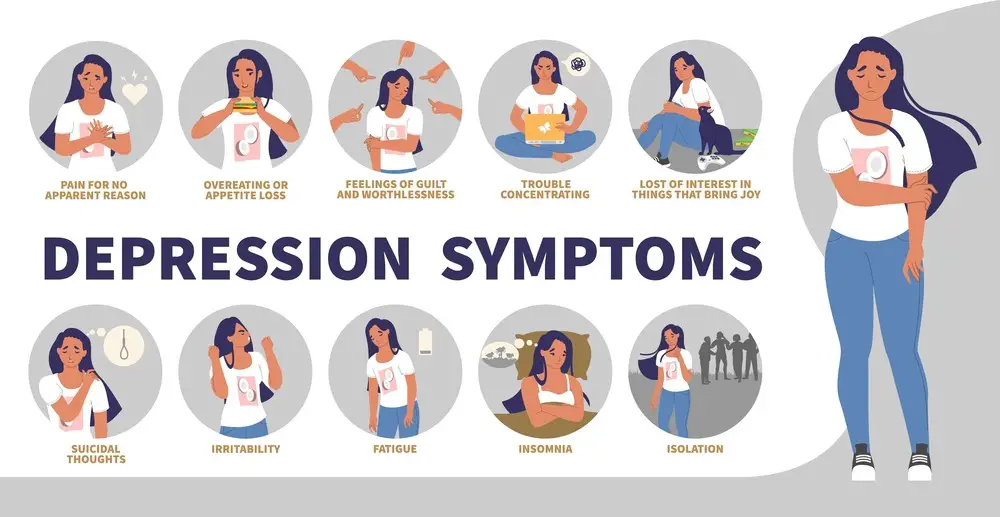Somatic therapy exercises offer an innovative approach to healing the mind and body. By focusing on the connection between bodily sensations and emotions, these exercises can help individuals process trauma, alleviate stress, and improve overall mental and physical well-being. Grounded in the principles of somatic psychology, which examines the mind and body as a holistic entity, this therapy aims to foster self-awareness and resilience through movement and other somatic techniques.
One of the critical aspects of somatic therapy is its emphasis on movement and its role in self-regulation. By engaging in specific exercises designed to increase body awareness and release stored tension, individuals can unlock the potential for healing and growth. Moreover, these techniques serve as powerful tools for managing stress, anxiety, and other mental health challenges.
Key Takeaways
- Somatic therapy exercises focus on the connection between body and mind to promote healing.
- Movement and body awareness are central components of self-regulation and resilience.
- This therapy has significant benefits for mental health, trauma processing, and stress management.
 Understanding Somatic Therapy
Understanding Somatic Therapy
Somatic therapy is an innovative approach to psychological treatment, focusing on the connection between mind and body. This therapy assumes that your thoughts, feelings, and sensations are all interrelated, influencing each other profoundly. By addressing both physical and emotional aspects, somatic therapy helps you achieve a deeper understanding of yourself and promotes healing on multiple levels.
One of the critical aspects of somatic therapy involves listening to your body and recognizing the physical sensations that correspond with emotional experiences. When you’re stressed or upset, for example, you might notice that your shoulders tense up, your breath becomes shallow, or your stomach churns. By paying attention to these reactions, you can gain valuable insight into your emotional state, unlocking the potential for profound transformation and growth.
To incorporate somatic techniques into your therapy sessions, try these simple exercises:
- Deep breathing: Slow, controlled breaths can help calm the nervous system and reduce stress. Inhale deeply through your nose, filling your belly with air. Exhale slowly through your mouth, allowing your abdomen to deflate. Repeat this process until you feel more relaxed and grounded.
- Progressive muscle relaxation: This technique involves tensing and relaxing different muscle groups to release tension. Start at your feet and work your way up, consciously tensing and releasing each muscle group.
- Body scanning: A helpful mindfulness practice, body scanning involves mentally scanning your body from head to toe, noticing any areas of tension or discomfort. This helps you develop a greater awareness of your body’s physical sensations, linking them with emotional experiences.
Somatic therapy is a powerful tool for addressing psychological issues and cultivating a healthier, more integrated sense of self. By incorporating these exercises into your routine, you’ll develop a deeper understanding of your mind-body connection and unlock your full healing potential. Remember, the key is to be present, curious, and compassionate with yourself as you explore this journey.
 Importance of Movement in Somatic Therapy
Importance of Movement in Somatic Therapy
Role of Dance and Posture
Dance and posture play a significant role in bodily therapy. By incorporating dance techniques, you can improve your bodily awareness and mobility. Additionally, maintaining proper posture promotes balance, reducing physical problems like chronic back pain.
Body-Movement and Balance
Achieving body-movement balance is essential in bodily therapy. It helps you become more in tune with your body, allowing you to relieve muscle tension and enhance mobility. Some suggestions for better balance include:
- Practicing deep-breathing exercises
- Engaging in low-impact physical activities
- Performing gentle stretches
Benefits of Yoga and Tai Chi
Yoga and Tai Chi are excellent practices to incorporate into somatic therapy. They offer various benefits, such as:
- Enhanced body awareness
- Improved mental and emotional well-being
- Increased balance and flexibility
Incorporating these practices can significantly transform your body-focused approach and overall well-being.
Body Awareness and Interoception
Interoception, or the awareness of internal bodily sensations, is crucial in somatic therapy. It helps you recognize tension and pain in your body and address them effectively. Some tips to improve interoception include:
- Pausing to notice your breath and heartbeat
- Practicing mindfulness exercises
- Engaging in sensory activities
Key takeaway: Developing a solid sense of body awareness fosters a deeper connection with yourself and supports healing.
Dealing with Muscle Tension and Chronic Pain
To address muscle tension and chronic pain, somatic therapy uses movement and body-focused approaches. These include various exercises, like:
- Progressive muscle relaxation
- Guided imagery techniques
- Gentle stretches and movement activities
Incorporate these practices into your daily routine to alleviate pain and enhance overall health.
Adopting a Body-Focused Approach
A body-focused approach is at the core of bodily therapy. By engaging in practices that promote balance, movement, and body awareness, you’ll nurture a deeper connection with your body. Remember to:
- Cultivate mindfulness practices
- Participate in activities like yoga and Tai Chi
- Keep a movement journal to track progress
Somatic Therapy Techniques and Their Significance
Somatic Experiencing and Its Impact
Somatic Experiencing (SE) is a powerful technique for resolving trauma and relieving its symptoms. It focuses on resourcing, titration, and pendulation – gradually bringing you back to a comfortable state of balance. By gently guiding your body’s experience and sensations, SE helps release stuck energy and promotes healing. Remember:
- Resourcing: Identify and use your inner and outer resources for support
- Titration: Take gradual, safe steps in releasing the trauma
- Pendulation: Move between activation and relaxation for better integration

Hakomi Method Explained
The Hakomi Method is a mindfulness-based, body-centered approach that aims to study and transform your beliefs and habitual patterns. It promotes self-awareness by encouraging you to observe your thoughts, emotions, and physical sensations non-judgmentally. Key aspects include:
- Presence: Stay present and aware during therapy sessions
- Mindfulness: Practice non-judgmental observation of oneself
- Nonviolence: Approach healing with gentle, compassionate methods

Eye Movement Desensitization and Reprocessing (EMDR)
EMDR is a well-known psychotherapy technique for treating trauma and its associated symptoms. It uses bilateral stimulation, such as eye movements or tapping, to help your brain process and integrate the traumatic memories. EMDR aims to reduce distress and improve your overall well-being.
- Bilateral stimulation: Helps process and integrate memories
- Reduces distress: Achieve emotional balance and healing
Role of Breathing Exercises in Somatic Therapy
Breathing exercises are crucial in somatic therapy by calming your nervous system and promoting relaxation. By focusing on your breath, you can reduce stress and anxiety, and create a sense of balance in your body. A few helpful techniques are:
- Diaphragmatic breathing: Breathe deeply into your belly
- Box breathing: Inhale, hold, exhale, and hold for equal counts
- Alternate nostril breathing: Inhale and exhale through one nostril at a time
 Applications of Talk Therapy
Applications of Talk Therapy
In somatic therapy, talk therapy serves to supplement body-focused techniques. It helps you understand the link between physical sensations and emotional experiences, facilitates self-awareness, and fosters self-compassion. By discussing your thoughts and feelings, you gain new insights and coping strategies.
- Understanding links: Build connections between the body and mind
- Fostering self-awareness: Recognize patterns and gain insights
- Coping strategies: Learn new ways to manage emotions and stress
Understanding Exposure Therapy
Exposure therapy is the gradual and systematic exposure to the sources of your anxiety, fear, or trauma. It helps you face and gain control over your fears in a safe and supportive environment. This method is particularly effective in treating phobias, obsessive-compulsive disorder, and post-traumatic stress disorder.
- Gradual exposure: Face fears in a structured, step-by-step process
- Safety and support: Work in a nurturing and understanding setting
- Regain control: Reclaim power over your emotions and reactions
 Handling Trauma with Somatic Therapy
Handling Trauma with Somatic Therapy
Facing trauma can be overwhelming, but somatic therapy exercises can make a world of difference. Designed to help you cope with stress and traumatic experiences, these exercises help release tension and regain control of your life. Let’s dive into some of the key strategies you can use:
- Mindful Breathing. Take a moment to focus on your breath. Breathe in deeply and exhale slowly. Repeat this process a few times, observing how your body relaxes with each breath.
- Body Scan. Close your eyes and mentally scan your body from head to toe, noticing any areas where you’re holding tension or stress. As you identify these areas, consciously release the tension and imagine it evaporating.
- Grounding Techniques. Find a quiet space, plant your feet on the ground, and focus on the feeling of stability beneath you. This simple practice can help you feel more secure and connected to the present moment.
Incorporating these exercises into your daily routine can be highly beneficial, especially for those suffering from PTSD or post-traumatic stress disorder. By focusing on the physical sensations that accompany trauma, somatic therapy allows you to work through emotions and stress in a safe and manageable way.
Remember, practicing self-compassion is crucial. Be patient with yourself as you navigate the healing process – it takes time and dedication. But with consistent practice, these somatic therapy exercises will lead you toward a healthier, more balanced state of mind.
Key takeaway: Somatic therapy is a powerful tool in overcoming trauma and stress. Incorporate mindful breathing, body scans, and grounding techniques into your daily routine to regain control and peace.
 Effect of Somatic Therapy on Mental Health
Effect of Somatic Therapy on Mental Health
Somatic therapy exercises involve the connection between the body and the mind. These exercises have significant impacts on mental health, particularly in the areas of anxiety, depression, and grief. In this section, we’ll explore the effects of somatic therapy on these concerns and how you can harness them to improve your overall mental well-being.
Impact on Anxiety
Somatic therapy exercises can help you manage anxiety by calming your body’s responses to stress. Through practices like deep breathing and mindful movement, you can become more aware of the physical manifestations of anxiety and learn to self-regulate your emotional state. Some benefits of using somatic therapy to address anxiety include:
- Reduced muscle tension
- Improved sleep quality
- Increased ability to cope with stressors
To start, try incorporating deep breathing exercises into your daily routine. Slowly inhale through your nose, filling your lungs fully, and then exhale through your mouth while releasing any tension.
 Implications for Depression
Implications for Depression
Somatic therapy can be an effective way to combat feelings of depression by reconnecting with your body. Depression often causes a sense of disconnection and numbness, and somatic exercises can help counteract these feelings by:
- Increasing self-awareness
- Strengthening the mind-body connection
- Enhancing your overall mood
To address depression, consider incorporating gentle and mindful movement practices such as yoga or tai chi. These forms of exercise can help increase blood flow, release endorphins, and ultimately, lift your mood.

Coping with Grief via Somatic Therapy
Grief is a natural part of life, but it can be overwhelming and challenging to process. Somatic therapy exercises can help you move through grief in a healthy, constructive way. Some ways somatic therapy aids in coping with grief include:
- Allowing emotional release
- Helping you stay present
- Creating a safe space for self-expression
One helpful somatic exercise for coping with grief is the “body scan.” Softly close your eyes and start at the top of your head, slowly moving down to your toes. Pay attention to each part of your body, and as you encounter any areas of tension or discomfort, take a moment to acknowledge them and take deep breaths before continuing. This exercise can help you become more in tune with your body and promote emotional healing.
Correlation Between Somatic Therapy and Neuroscience
The world of neuroscience has significantly contributed to our understanding of the connection between the mind and body. One fascinating discovery is the relationship between somatic therapy and the nervous system. You might be wondering how neuroscience has informed the practice of somatic therapy in addressing mental and physical health issues. Don’t worry; we’ll dive into it!
The autonomous nervous system (ANS) regulates your body’s unconscious actions, such as digestion, heart rate, and breathing. When you’re dealing with stress or trauma, it’s crucial to recognize the role of the ANS. Somatic therapy balances the ANS, helping you build resilience and harmonize your body’s responses.
Here’s what you need to know:
- Somatic therapy integrates mindfulness and body awareness, enabling you to uncover unconscious patterns affecting your well-being.
- Neurosomatic therapy is an approach that focuses explicitly on the relationship between the nervous system and the musculoskeletal system to reduce pain and tension.
- Somatic therapy exercises lead to physiological changes, such as releasing muscle tension, improving posture, and increasing body awareness.
As you embark on the journey of somatic therapy, you’ll learn to develop a deeper connection with your body. By understanding the neuroscience behind it, you can appreciate the harmony between your mind and body. And remember, a balanced nervous system lays the foundation for a healthier, more resilient you.
Touch and Verbal Components in Somatic Therapy
Regarding somatic therapy exercises, touch and verbal components play a significant role in guiding the process. Let’s explore how these elements can help you achieve the best results.
In somatic therapy, touch is a powerful means of communication between the therapist and yourself. This connection allows your nervous system to experience relaxation and stress relief. While you exercise, the therapist might use gentle touch techniques, like holding, stretching, or tapping, to provide support and guidance. This tactile communication supports your understanding of physical sensations and raises body awareness.
On the other hand, the verbal component in somatic therapy helps build trust and understanding between you and the therapist. Through conversation, you can express your thoughts and feelings, while the therapist can offer guidance or suggestions. Verbal communication during therapy can be as straightforward as the therapist instructing you to focus on your breath or guiding you through a specific exercise.
Here are some tips on how to make the most of touch and verbal components in somatic therapy:
- Stay open and receptive: Allow yourself to be open to the touch and verbal cues from your therapist. Trust the process as it unfolds.
- Communicate your needs: If a touch feels too intense or uncomfortable, let your therapist know immediately. It’s essential to maintain open communication throughout your sessions.
- Practice self-awareness: As you engage in somatic exercises, pay attention to the sensations in your body. Listen to your verbal cues and recognize how your body responds when touched or given verbal guidance.
To summarize, touch and verbal elements are essential for effective somatic therapy. By staying aware and receptive to these components and maintaining open communication with your therapist, you can optimize your therapy sessions and work towards feeling more balanced and integrated.
Somatic Therapy Exercises for Self-Regulation
Somatic therapy exercises can be a game changer when it comes to self-regulation and managing negative emotions. Here are some easy-to-follow exercises to help combat dysregulation and ease your mind.
1. Grounding Exercise
This simple exercise helps you connect with your body and the environment. Take a moment to stand or sit comfortably. Focus on your breath and your body as you take deep breaths. Now, gently press your feet against the floor, acknowledging the sensation. Physically connecting with your surroundings can help you feel more grounded and present.
2. Body Scan
A body scan exercise can provide insight into areas where you might be holding tension. Close your eyes and take a few deep breaths. Begin at the top of your head and slowly walk down to your toes, paying attention to any tightness, discomfort, or emotions. As you notice these sensations, take a breath and imagine releasing the tension in those spots.
3. Progressive Muscle Relaxation (PMR)
PMR is an easy-to-learn technique that helps relieve tension and promote relaxation. Start by tensing a muscle group, such as your hands, for a few seconds. Then, release the tension and let your muscles relax completely. Continue this process, working through different muscle groups in your body.
- Tips for PMR:
- Focus on one muscle group at a time
- Breathe deeply and evenly throughout the entire exercise
- Practice PMR regularly to reinforce its calming effects
Incorporating these somatic therapy exercises into your routine can help you better manage stress, anxiety, and other negative emotions. By practicing self-regulation through these techniques, you’ll be better equipped to handle life’s challenges with a sense of balance and inner calm.
Physical Sensations and Somatic Therapy
Somatic therapy exercises focus on the connection between your mind and body. By paying attention to your physical sensations, you can understand and work through emotional and mental issues. Let’s explore how to use physical sensations in somatic therapy.
To start, you should become more aware of your body. Notice how you hold yourself when standing, sitting, or lying down. Feel the difference when you consciously adopt a relaxed posture. Pay close attention to any muscle tension and breathe deeply, letting your body let go of any tightness.
Next, try practicing mindfulness. During daily activities, take a moment to pause and focus on your body’s sensations. How does the chair feel against your back? What temperature is your skin? By becoming more in tune with your body’s signals, you’ll be better equipped to process emotions using somatic therapy techniques.
Here are some simple exercises you can try:
- Grounding: Stand or sit with your feet firmly planted on the floor. Feel the connection with the earth beneath you. Take deep breaths and imagine roots extending from your feet, anchoring you to the ground.
- Progressive muscle relaxation: Focus on one muscle group at a time. Tense the muscles for a few seconds, then release and notice the feeling of relaxation. Move through your entire body in this manner.
- Body scan: As you lie down, mentally scan your body from head to toe, observing any sensations or tension. Use your breath to release tight areas and cultivate a greater sense of overall relaxation.
Incorporating these exercises into your routine will help you develop a stronger mind-body connection. By listening to your physical sensations, you can tap into your body’s wisdom and utilize somatic therapy techniques to address emotional and mental challenges. So, take the time to explore your unique physicality and become more in touch with your body.
Peter Levine and His Contributions to Somatic Therapy
Concerning somatic therapy, Peter Levine is a name that stands out. With a Ph.D. in medical and biological physics, he has dedicated his work to understanding trauma and its impact on our bodies. His extensive research led to the development of Somatic Experiencing (SE), a groundbreaking approach that focuses on regulating your body’s stress response and healing from trauma.
In the late 20th century, while observing animals in the wild, Levine noticed that they tend to shake off stress after a traumatic event. Inspired by this observation, he sought to apply this innate wisdom to human trauma recovery. He found that humans’ capacity to release trauma resides within our innate bodily reactions but is often suppressed by social conditioning.
As a result, Levine developed his SE model, which encourages the release of tension and trauma through body sensations and movements. The practice of SE integrates your body’s physiological responses to help you become more aware of sensations and emotions, thus fostering a more effective way to process and release traumatic stress.
Here are a few key aspects of Levine’s contribution to somatic therapy:
- Somatic Experiencing: The SE method focuses on identifying, processing, and releasing stress, trauma, and negative emotions by addressing your body’s physical sensations. This body-mind approach targets not just your thoughts but also the physiological manifestations of trauma.
- Polyvagal Theory in Therapy: Levine’s work incorporates elements of the polyvagal theory, which highlights how our nervous system affects our responses to stress and trauma. By understanding this theory, therapists can guide you in regulating your nervous system and promoting healing.
- Body Awareness Techniques: Levine’s approach emphasizes connecting with your body and its sensations. Through various exercises, you become more attuned to your body, allowing for a deeper understanding of the connection between emotional states and physical symptoms.
By incorporating Peter Levine’s contributions into the realm of bodily therapy, you have the opportunity to reconnect with your body’s natural healing capabilities and regain control over the stressors in your life. Take the time to appreciate the crucial insights Levine has provided and consider integrating these innovative methods into your journey towards self-growth and well-being.
 The Interplay of Mind and Body in Somatic Therapy
The Interplay of Mind and Body in Somatic Therapy
Somatic therapy is an approach that focuses on the mind-body connection. Through different exercises, you’re encouraged to become more aware of your body’s sensations and incorporate mindfulness practices into your daily life. These activities promote emotional awareness and lead to a deeper understanding of how your thoughts and emotions are intricately connected to your physical well-being.
Take a step back and look at your daily routine. Have you ever considered how stress from work or relationship issues might impact your physical health? It’s crucial to recognize that our mental and emotional states can manifest in the body as pain or discomfort. Somatic therapy exercises aim to help you tap into this mind-body connection to understand your internal landscape better.
One way to do that is by practicing mindful breathing. As you inhale and exhale slowly, pay close attention to how your chest rises and falls, feeling the breath move through your body. This simple activity builds a connection between your mind and body, increasing awareness of your emotions and their potential to affect your physical state.
As you delve further into somatic therapy exercises, consider incorporating these strategies for increased effectiveness:
- Journaling: Take a few minutes daily to jot down your thoughts and feelings. This can help establish a healthy emotional outlet and promote self-reflection.
- Body Scan Meditation: Lie comfortably and systematically focus on each body part, recognizing areas of tension or discomfort.
- Gentle Movement: Engage in low-impact activities like yoga or stretching to help release any physical tension in your body.
By regularly carving out time for these exercises, you’ll not only cultivate a deeper connection between your mind and body but also learn constructive ways to deal with emotional stress.
So, give somatic therapy exercises a try! As you become more in tune with your mind-body connection, you’ll find yourself better equipped to handle life’s ups and downs with clarity and confidence. Remember, it’s all about finding balance and nurturing the relationship between your mental and physical well-being.
Somatic Therapy Boundaries and the Development of Trust
When engaging in somatic therapy exercises, it’s vital to establish boundaries to foster trust between you and your practitioner. These boundaries create a safe environment to explore your emotions and sensations.
First, communicate your needs and limits openly with your therapist. They will respect your wishes and tailor their approach accordingly. Remember that it’s okay to ask for a break or voice discomfort during a session.
- Know your limits: Understanding your emotional and physical tolerances will help create a secure atmosphere.
- Discuss your history: Share information about past traumas or issues with your therapist to aid your healing.
Active listening is crucial in deepening trust with your therapist. When they genuinely listen and respond appropriately, you feel heard and supported. You can practice active listening by:
- Being fully present
- Reflecting on what the other person is saying
- Asking questions for clarification
Remember, trust is a two-way street. Your therapist should be consistent and transparent in their interactions with you. Keeping agreements and being punctual for appointments speaks to their professionalism and reliability.
Throughout the therapeutic process, you’ll likely observe an increased sense of trust and safety as your boundaries are respected and upheld. This, in turn, will help you experience the transformative benefits of somatic therapy fully.
Key takeaway: Developing and maintaining boundaries and trust with your somatic therapist is crucial in creating a safe and effective environment for meaningful self-discovery and healing.
 Understanding PTSD Symptoms Through Somatic Therapy
Understanding PTSD Symptoms Through Somatic Therapy
Somatic therapy exercises can be beneficial for understanding and soothing the symptoms of PTSD. PTSD symptoms can be very intense, with experiences like flashbacks, feeling constantly threatened, and having difficulty regulating emotions.
One of the ways somatic therapy addresses these issues is through a body scan. During a body scan, you can focus on different body parts, noticing any sensations, tensions, or emotions. Gradually sweeping your awareness from head to toe can help you become more grounded and present in the moment.
Tapping is another effective technique used in somatic therapy to help alleviate PTSD symptoms. Tapping involves gently tapping on specific points on your body, like the sides of your eyes, under your nose, and your arms. This can help release feelings of threat and discomfort stored in your body.
Here are some strategies and tips for incorporating somatic therapy exercises into your life:
- Start by designating a specific time and space for your exercises, ensuring a comfortable, quiet environment.
- Begin with a grounding practice such as deep breathing or mindful movement.
- Integrate the body scan and tapping techniques into your routine, focusing on identifying and releasing any sensations or emotions that arise.
- Consistency is key, so establish a regular practice to maximize the benefits.
Incorporating somatic therapy exercises into your daily routine can help you better manage your PTSD symptoms and gain a deeper understanding of your own body and emotions. Remember, it’s a journey, and these exercises are a significant step towards healing and overall well-being.
Effect of Somatic Therapy on Physical Health
Somatic therapy can have a significant impact on your physical health. It not only helps in reducing stress and anxiety but also addresses various aspects of bodily wellness. Let’s explore some key areas where it can make a difference:
Interactions with the Immune System
A healthy immune system is crucial for overall well-being. Somatic therapy exercises help boost your immune system by:
- Reducing stress: High-stress levels can weaken your immune system. Engaging in somatic bodywork helps calm your mind, reducing stress and leading to a stronger immune response.
- Enhancing relaxation: Somatic therapy exercises promote relaxation, which in turn supports the healthy functioning of your immune system.
- Improving sleep: A good night’s sleep is essential for a robust immune system. Somatic exercises help in releasing tension, making it easier for you to have a restful sleep.
Key takeaway: Practicing somatic therapy exercises can contribute to a healthier immune system by reducing stress, promoting relaxation, and improving sleep quality.
Influence on Blood Pressure and Blood Sugar
Maintaining healthy blood pressure and blood sugar levels is vital for physical health. Somatic therapy exercises can assist in this regard:
- Lowering blood pressure: Somatic exercises encourage deep breathing and relaxation, which can help lower your blood pressure. They also help release muscle tension, further aiding blood pressure regulation.
- Regulating blood sugar: Somatic therapy exercises can indirectly aid blood sugar control by reducing stress. Stress hormones can negatively impact your body’s ability to regulate blood sugar, so managing stress is essential for maintaining stable glucose levels.
Key takeaway: Somatic therapy exercises can help regulate blood pressure and blood sugar levels by promoting relaxation, reducing stress, and improving overall bodily function.
Engaging in somatic therapy exercises can significantly enhance your physical health. By supporting your immune system, regulating blood pressure, and keeping blood sugar levels in check, these exercises pave the way for a healthier, more balanced life.
Is Somatic Therapy the Right Step for You? Let’s Find Out!
Embarking on a journey with somatic therapy exercises can be transformative, but it’s not a one-size-fits-all solution. Curious if it’s up your alley? Let’s dive in.
Somatic Therapy Might Be Your Jam If You:
- Are keen to connect: If you want to deepen the connection between your mind and body, somatic therapy can be your bridge. It’s all about tuning into your body’s signals.
- Have been feeling stuck: Sometimes, words alone can’t untie the knots in our experiences. Somatic therapy offers an alternative path to release and understand those pent-up emotions.
- Crave a holistic approach: If incorporating movement and awareness into your healing process sounds appealing, somatic therapy could be a good match for you.
On the Flip Side, It Might Not Be For You If You:
- Need immediate results: Somatic therapy is a process, not a quick fix. It’s about gradual progress, not overnight miracles.
- Prefer a more traditional therapy: If talking it out from a couch feels more your style, you might not jive with the physical aspects of somatic practices.
- Have certain medical conditions: It’s crucial to consult with a healthcare provider first, especially if you have a medical condition that limits movement or could be exacerbated by physical exercises.
Remember, the best way to determine if somatic therapy exercises resonate with you is to try them, but always with a professional’s guidance. Listen to your body—it’s the wisest guide you’ve got.
Conclusion
Incorporating somatic therapy exercises into your routine can significantly benefit your overall well-being. These exercises help release tension and stress, improve body awareness, and promote emotional healing. Remember to take it slow and listen to the signals your body is giving you.
Breathing exercises are an essential part of somatic therapy. They help you focus on the present moment and release pent-up emotions. Start by practicing deep, slow breaths, allowing your body to relax and release any tension.
Grounding exercises, such as mindful walking or yoga, can help you reconnect with your body and the physical world. They are helpful for those who may feel detached or anxious, and they help to create a sense of stability in your life.
Body scanning is another effective technique to enhance your body awareness. This practice encourages you to gently observe sensations in different parts of your body, cultivating mindfulness and self-awareness.
Finally, tailor your somatic therapy exercises to your specific needs and preferences. Each individual is unique, so experiment with different exercises until you find the ones that work best for you. And don’t forget to be patient with yourself during this process; personal growth takes time and effort.
By incorporating these exercises into your daily life, you’ll be on your way to developing a healthier relationship with your body. Keep practicing, and you’ll soon reap the rewards of a more balanced and harmonious life.
Frequently Asked Questions
What are some effective somatic exercises for stress relief?
Somatic exercises are great for stress relief as they help you release tension in your body. Here are a few simple exercises you can try:
- Pandiculation: Slowly stretch your muscles, yawn, and release the tension. This natural movement helps reset your muscle length and can be done anywhere.
- Body scanning: Lie down and focus on different parts of your body, consciously relaxing each of them in turn.
- Soothing self-touch: Gently massage or touch your body parts, such as your neck, face, or shoulders, to release tension and cultivate self-compassion.
Remember, the key takeaway is to be present and listen to your body’s signals during these exercises.
How can I practice somatic exercises for weight loss?
Somatic exercises can be a complementary addition to your weight loss journey. To practice, incorporate these techniques:
- Focus on mindful eating, paying attention to your body’s hunger and fullness cues.
- Engage in somatic movement practices like dance, yoga, or tai chi to increase your body awareness and stamina.
- Practice stress management techniques to minimize emotional eating.
By increasing your mind-body connection, you can develop healthier habits that support weight loss.
Which somatic therapy techniques are best for self-care?
Self-care is about nurturing and honoring your body, and somatic therapy techniques can be a valuable part of your routine. Here are some suggestions:
- Diaphragmatic breathing: Practice deep breaths to calm your nervous system.
- Progressive muscle relaxation: Tense and release different muscle groups to alleviate tension.
- Visualization: Imagine soothing scenarios or environments to cultivate a sense of peace.
Incorporate one or more of these techniques into your routine for a balanced mind-body connection.
What are some examples of somatic therapy exercises?
There’s a wide variety of somatic therapy exercises available to help you connect with your body. A few examples include:
- Somatic yoga: Combines traditional yoga poses and movements with body awareness techniques.
- TRE (Tension & Trauma Releasing Exercises): Shaking and trembling exercises to release deep muscular tension.
- Meditative movement: Practices like qigong or tai chi, focusing on the harmony between breath and motion.
Remember to listen to your body and choose exercises that feel good.
Can you recommend somatic therapy exercise resources?
Here are some resources you might find helpful:
- Books like “Somatics” by Thomas Hanna or “The Body Keeps the Score” by Bessel van der Kolk.
- Websites and blogs that offer free articles, exercises, and videos on somatics and somatic therapies.
- Professional associations like the United States Association for Body Psychotherapy offer directories to locate certified somatic therapists in your area.
Explore these resources and find the ones that resonate with you and your needs.
How do I begin incorporating somatic exercises into my routine?
Starting with somatic exercises can be as simple as:
- Setting aside a specific time each day for practicing somatic techniques.
- Choosing one or two exercises from the suggestions provided, or explore others that resonate with you.
- Practicing consistency and patience, as it may take time to notice significant changes.
Remember, the journey to a deeper mind-body connection is unique to each individual, so be kind to yourself and enjoy the process.
About Jacob Maslow
After surviving the traumatizing events of 9/11, I took it upon myself to heal through helping others. I’m the primary caregiver of my children and understand from first-hand experience the lonely paths you have to walk as a partner and parent when leaving an unhealthy relationship.
We’re all echoing in a dark space that doesn’t have to be this empty, and that’s been my mission since finding solace and recovery in therapy: To help comfort others who are still in shock and at the prime of their struggle.
I came across BetterHelp after searching for this type of community. I wanted to belong to a body of proactive therapists and supportive therapy veterans that allowed me to see other sides of the story.
It was unconventional, and that’s what attracted me most. During my most challenging times, when my ex-wife completely cut me off from my children, I found comfort and clarity through BetterHelp.
Instead of being chained to a strict therapist recommendation, I was in charge of who I felt understood my struggle most. That allowed me to find my true peace, as I was reunited with those who read behind my words and had first-hand experience with my trauma.
Recovery is a choice; with BetterHelp, that choice will be a few clicks away. You can join their couples-oriented platform, Regain.us, for those stuck with family estrangement and toxic relationship patterns.
- Is It OK to Put Baby to Sleep Without Burping? Unveiling the Facts - February 13, 2024
- How To Get Rid Of Anxiety Forever: Long-Term Strategies For Well-Being - February 13, 2024
- How to Sleep with Curly Hair: Overnight Curls Care Tips - February 13, 2024
This site contains affiliate links to products. We will receive a commission for purchases made through these links.


 Understanding Somatic Therapy
Understanding Somatic Therapy Importance of Movement in Somatic Therapy
Importance of Movement in Somatic Therapy Applications of Talk Therapy
Applications of Talk Therapy Handling Trauma with Somatic Therapy
Handling Trauma with Somatic Therapy Effect of Somatic Therapy on Mental Health
Effect of Somatic Therapy on Mental Health Implications for Depression
Implications for Depression The Interplay of Mind and Body in Somatic Therapy
The Interplay of Mind and Body in Somatic Therapy Understanding PTSD Symptoms Through Somatic Therapy
Understanding PTSD Symptoms Through Somatic Therapy
